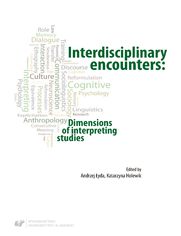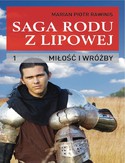Interdisciplinary encounters: Dimensions of interpreting studies - Sensus

ISBN: 978-83-226-3229-1
stron: 190, Format: ebook
Data wydania: 2018-05-18
Ksi─Ögarnia: Sensus
Cena ksi─ů┼╝ki: 16,80 z┼é (poprzednio: 20,74 z┼é)
Oszczędzasz: 19% (-3,94 zł)
Interdisciplinary encounters: Dimensions of interpreting studies brings together researchers, scholars, practitioners, interpreters and interpreter trainers, who share their research results, perspectives and experiences regarding the interdisciplinarity in the field of interpreting studies. This interdisciplinarity is well reflected in the range of topics covered and research questions asked. From the interplay of interpreting and linguistics to the interplay of interpreting and psychology, to mark quite arbitrarily only two distinct epistemologies, and hence distinct methodologies.
“This volume is an excellent addition to the Interpreting Studies literature. The cutting-edge research presented by a wide range of international experts demonstrates the strength of an interdisciplinary approach to the study of interpretation. The volume will be of great benefit to educators, students of interpreting as well as experienced practitioners.”
– Robert G. Lee, Senior Lecturer in BSL and Deaf Studies, University of Central Lancashire, UK
Czym jest przek┼éad ustny? Kim jest podejmuj─ůcy si─Ö tego zadania t┼éumacz? Jakie warunki musi spe┼énia─ç, by podo┼éa─ç temu zadaniu? Jakie czynniki wp┼éywaj─ů na sukces w t┼éumaczeniu? W czasach wielokulturowo┼Ťci, wieloj─Özyczno┼Ťci i wzmo┼╝onych ruchów imigracyjnych wzros┼éa znacznie rola t┼éumaczy, a zw┼éaszcza t┼éumaczy ustnych. Mimo ┼╝e badania nad istot─ů przek┼éadu ustnego prowadzone s─ů od wielu lat, zmieniaj─ůce si─Ö uwarunkowania polityczne, spo┼éeczne i kulturowe stawiaj─ů zarówno przed t┼éumaczami, jak i badaczami procesu przek┼éadu nowe wyzwania. Wiele z tych wyzwa┼ä wymaga zrozumienia wp┼éywu czynników analizowanych zwykle w obr─Öbie poszczególnych dyscyplin naukowych. Dostrzegaj─ůc z┼éo┼╝ono┼Ť─ç procesu t┼éumaczenia, redaktorzy ksi─ů┼╝ki Interdisciplinary encounters: Dimensions of interpreting studies zaprosili wielu uznanych badaczy i praktyków t┼éumaczenia do dyskusji nad interdyscyplinarnym charakterem t┼éumaczenia ustnego. Niniejszy tom – adresowany nie tylko do naukowców, ale i do t┼éumaczy oraz dydaktyków t┼éumaczenia – stanowi wi─Öc nowatorsk─ů prób─Ö odpowiedzi na zadane powy┼╝ej pytania.
Osoby które kupowały "Interdisciplinary encounters: Dimensions of interpreting studies", wybierały także:
- Rozmówki niemieckie dla bystrzaków 19,67 zł, (5,90 zł -70%)
- Rozmówki rosyjskie dla bystrzaków 19,67 zł, (5,90 zł -70%)
- English 4 IT. Praktyczny kurs języka angielskiego dla specjalistów IT i nie tylko 39,09 zł, (12,90 zł -67%)
- Superskuteczne strategie opanowania języków obcych. Twój prywatny coach. Wydanie II 39,87 zł, (17,94 zł -55%)
- Niemiecki Fiszki mp3 1000 najważniejszych słów i zdań 13,89 zł, (6,25 zł -55%)





